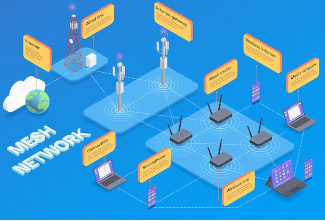Understanding IP Networks: A Comprehensive Guide
Introduction
In the modern era of interconnected devices and digital communication, the term “IP network” has become ubiquitous. IP networks are the backbone of the internet, enabling seamless data transmission between devices across the globe. In this blog post, we will delve into the world of IP networks, exploring their fundamental concepts, components, and functionality. By the end of this guide, you will have a clear understanding of how IP networks work and their significance in our digital lives.

I. What is an IP Network?
An IP network, or Internet Protocol network, is a communication network that uses the Internet Protocol (IP) to transmit data packets between devices. It is a fundamental component of the internet infrastructure and is responsible for routing and delivering data across interconnected networks. IP networks enable devices to be identified and communicate with each other using unique IP addresses.
II. IP Addresses and Subnets
Every device connected to an IP network is assigned a unique identifier called an IP address. An IP address consists of a series of numbers separated by periods (e.g., 192.168.0.1). IPv4 (Internet Protocol version 4) is the most widely used IP addressing scheme, but the transition to IPv6 (Internet Protocol version 6) is underway due to the depletion of IPv4 addresses.
To organize IP addresses efficiently, IP networks are divided into subnets. Subnets allow network administrators to allocate IP addresses to different segments of a network, facilitating efficient routing and management of network resources.
III. IP Network Components
An IP network comprises various components that work together to ensure seamless data transmission:
a) Routers: Routers are devices responsible for directing data packets between different networks. They examine the destination IP addresses of incoming packets and determine the most efficient path for their delivery.
b) Switches: Switches are devices that connect devices within a local network and facilitate communication between them. Unlike routers, switches operate at the data link layer of the networking stack and are primarily concerned with forwarding data within the same network.
c) Gateways: Gateways are devices that bridge different types of networks, allowing communication between networks that use different protocols or technologies. They act as translators, converting data from one format to another.
d) Firewalls: Firewalls are security devices that monitor and control incoming and outgoing network traffic. They enforce security policies and protect IP networks from unauthorized access and malicious activities.
IV. IP Network Protocols
Several protocols are used in IP networks to ensure reliable and efficient data transmission:
a) Internet Protocol (IP): IP is the core protocol of an IP network. It provides the addressing and routing mechanisms necessary for data delivery.
b) Transmission Control Protocol (TCP): TCP is a transport layer protocol that provides reliable, connection-oriented data delivery. It breaks data into packets, ensures their correct sequencing, and handles retransmissions if packets are lost or damaged.
c) User Datagram Protocol (UDP): UDP is a transport layer protocol that provides a connectionless, unreliable data delivery mechanism. It is commonly used for time-sensitive applications like streaming media or real-time communication.
d) Internet Control Message Protocol (ICMP): ICMP is a network layer protocol used for diagnostic and error-reporting purposes. It is commonly used for tasks such as pinging a remote host to check its availability.
Conclusion
IP networks are the backbone of modern communication, enabling seamless data transmission across the internet. They rely on IP addresses, routers, switches, gateways, and protocols like IP, TCP, UDP, and ICMP to ensure efficient and reliable data transfer. Understanding the fundamental concepts and components of IP networks is essential for network administrators, IT professionals, and anyone interested in the inner workings of the internet. By grasping the concepts discussed in this blog post, you have taken a significant step toward comprehending the underlying mechanisms that power our interconnected digital world.
